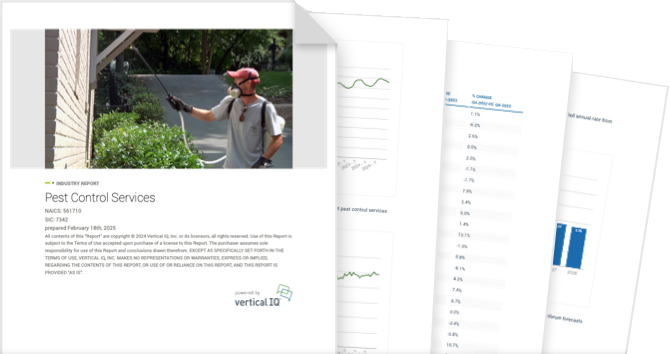Pawn Shops NAICS 522299

Unlock access to the full platform with more than 900 industry reports and local economic insights.
Get access to this Industry Profile including 18+ chapters and more than 50 pages of industry research.
Industry Summary
The 10,600 pawn shops in the US provide secured loans to individuals, using items of personal property as collateral. Firms earn interest and service fees on the loan, with interest rates charged varying by state. Pawn shops also generate revenue by selling used merchandise obtained from unpaid loans. They may also sell new and used items purchased from consumers or businesses.
Federal, State And Local Regulation
Pawn shops must comply with a number of federal regulations, as well as state and local regulations that vary widely from state to state.
Dependence On Gold Prices
A substantial portion of most pawn shops’ loans are secured by gold jewelry.
Recent Developments
May 28, 2025 - US Pawn Shop Giant Expands Globally
- US-based pawn shop owner FirstCash is rapidly solidifying its place as a global industry player with its planned $340 million acquisition of the publicly-traded H&T Group PLC representing a big shift into the UK market. FirstCash was already a dominant player in the US and Latin American markets, with 3,000 locations and 20,000 employees. H&T is a well-known brand in the UK dating back to its founding in 1890. The chain has almost 300 pawn stores throughout England and specializes in high-end new and previously owned jewelry and watches. The deal will make FirstCash the largest publicly-traded pawn shop company in all of its markets and open up growth opportunities for further expansion in Europe. The $3.4 billion company has enjoyed robust growth over the past several years not only in pawn shop retailing (seven consecutive quarters of double-digit same store growth) but in no-credit payment and loan activities.
- US consumers owed $17.57 trillion in debt as of Q3 2024, per credit agency Experian, a 2.4% increase from the same period in 2023. While the debt is lower than it has been since 2022, digging deeper into the data reveals some unwelcome trends. Second mortgages and credit card debt - lending areas which typically deal with customers in financial straits and have high interest rates - rose the most in 2023-2024; 9.7% and 8.6%, respectively. Credit card debt alone averages out at about $10,000 per American family, according to consumer finance site WalletHub, and averages a 22% annual percentage rate. The biggest drop in debt came from student loads (-16.8%) due largely to loan forgiveness programs under President Biden. When Experian looked at debt by generation, Gen Z had the most (30%) while Gen X had the least (1.5%).
- The spot price of gold increased from about $1,800 per ounce in October 2023 to over $2,690 in early mid January 2025, a 49% increase. The spot price of gold hit an all-time high of $2,788.54 on October 30, 2024. A substantial portion of most pawn shops’ loans are secured by gold jewelry. Many shops also buy gold jewelry when gold prices are high and resell it for scrap value. Significant decreases in the price of gold can result in decreases in merchandising sales margins, inventory valuations, the value of collateral securing outstanding pawn loans, and the balance on pawn loans secured by gold jewelry.
- Personal income, an indicator of demand for pawn shop loans, increased 5.61% year over year and 0.2% month over month in August, according to the Bureau of Economic Analysis. International, secondary market, and all other nondepository credit intermediation industry employment decreased slightly during the first 10 months of 2024, according to the US Bureau of Labor Statistics. Pawn shops sales are forecast to increase at a 3.59% compounded annual rate from 2024 to 2028, slower than the growth of the overall economy, according to Inforum and the Interindustry Economic Research Fund, Inc.
Industry Revenue
Pawn Shops

Industry Structure
Industry size & Structure
The average pawn shop operates a single location, employs 5-6 workers and generates $8.6 million in annual revenue.
- There are about 10,600 pawn shop establishments in the US employing 57,300 workers and generating $42 billion in annual revenue.
- Use of pawn shop, payday, tax refund anticipation, and auto title loans, and of rent-to-own services all decreased between 2017 and 2021, according to the FDIC. About 1% of households used each product or service in 2021. The proportion of households that used at least one of the five products or services decreased sharply from 7.4% in 2017, to 4.8% in 2019, and to 4.4% in 2021.
- The industry is concentrated, with the 50 largest firms representing 78% of industry revenue.
- The two publicly-traded pawn chains are EZCorp and FirstCash (formerly First Cash Financial and Cash America), and they account for about 22% of retail locations.
Industry Forecast
Industry Forecast
Pawn Shops Industry Growth

Vertical IQ Industry Report
For anyone actively digging deeper into a specific industry.
50+ pages of timely industry insights
18+ chapters
PDF delivered to your inbox
